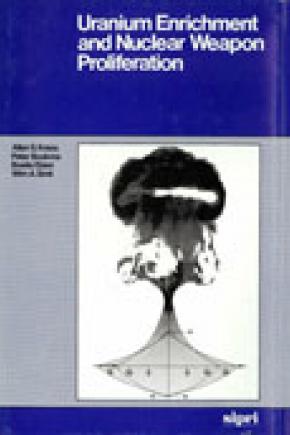Uranium Enrichment and Nuclear Weapon Proliferation
This book presents the technical and political information necessary to evaluate the emerging threat to world security posed by the then recent advances in uranium enrichment technology. Uranium enrichment has played a relatively quiet but important role in the history of efforts by a number of nations to acquire nuclear weapons and by a number of others to prevent the proliferation of nuclear weapons. For many years the uranium enrichment industry was dominated by a single method, gaseous diffusion, which was technically complex, extremely capital-intensive, and highly inefficient in its use of energy. As long as this remained true, only the richest and most technically advanced nations could afford to pursue the enrichment route to weapon acquisition.
But during the 1970s this situation changed dramatically. Several new and far more accessible enrichment techniques were developed, stimulated largely by the anticipation of a rapidly growing demand for enrichment services by the worldwide nuclear power industry. This proliferation of new techniques, coupled with the subsequent contraction of the commercial market for enriched uranium, had created a situation in which uranium enrichment technology could well become the most important contributor to further nuclear weapon proliferation.
Some of the issues addressed in this book are:
- A technical analysis of the most important enrichment techniques in a form that is relevant to analysis of proliferation risks;
- A detailed projection of the world demand for uranium enrichment services;
- A summary and critique of contemporary institutional non-proliferation arrangements in the world enrichment industry, and
- An identification of the states most likely to pursue the enrichment route to acquisition of nuclear weapons.
Part I
1. Fundamentals of uranium enrichment
2. Enrichment and proliferation
3. Options for control
4. Conclusions and recommendations
Part II
5. General principles of uranium enrichment
6. Enrichment processes
Part III
7. A history of non-proliferation efforts
8. The world enrichment picture
Appendix 8A. Nuclear power growth 1980‒1990
Appendix 8B. Demand for and supply of enrichment services

